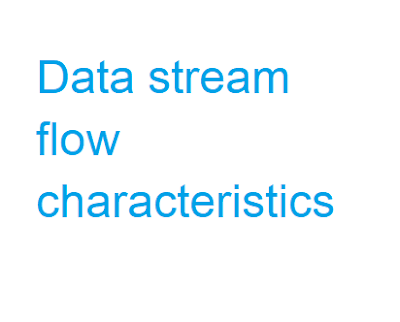Data stream (flow) characteristics
The data or information of discrete or continuous media is transmitted and knowledge exchange takes place between source and destination after dividing the data into individual units called packets. The source and destination may be located on same or different two machine or computers. The sequence of individual packets transmitted in time dependent (continuous) fashion is named a knowledge flow stream or data flow.
For example speech in communication system is that the data stream is that the data stream of continuous media where as retrieval of information file from database is that the data stream of discrete media.
The data stream of various media has different features during transmission of data. In computer communication and switching the info transmission has the three attributed modes:
1. Asynchronous transmission mode.
2. Synchronous transmission mode.
3. Isochronous transmission mode.
1. Asynchronous transmission mode:
This mode provides no timely restriction for communication that's packets reach to the receiver as fast as possible. All information of discrete media will be transmitted as an asynchronous data stream. as an example protocol for e-mail in world wide web, Ethernet in LAN.This mode isn't appropriate for continuous media. If this mode should be employed in continuous media, then an extra method should be applied to supply the time restrictions.
2. Synchronous transmission mode:
This mode defines maximum end to finish delay for every packet of a knowledge stream. The bound of delay will never be violated (broken). Although a packet can reach to the receiver at any arbitrary earlier time, it's reliable mode for multimedia since a maximum end to finish delay may be applied.3. Isochronous transmission mode:
This mode defines a minimum end to finish delay. this implies that the delay of individual packets is bounded to minimum called jitter.In this mode the required storage of video data at the receiver may well be strongly reduced. These demands on intermediate storage must be consider altogether components along the information route between source and sink.


